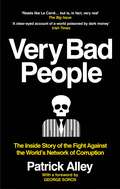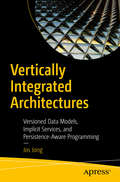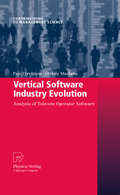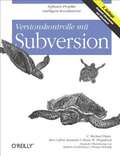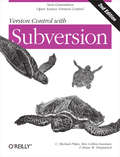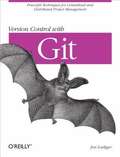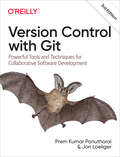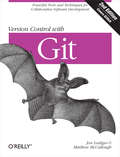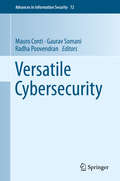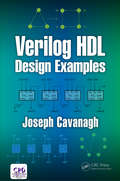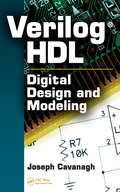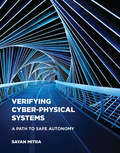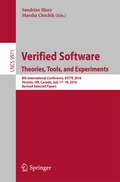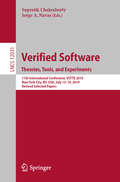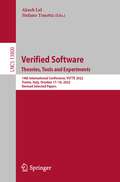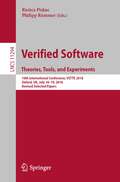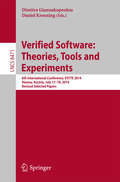- Table View
- List View
Very Bad People: The Inside Story of the Fight Against the World’s Network of Corruption
by Patrick Alley*****'Reads like a John le Carré novel but is, in fact, very real.' - The Big Issue'Very Bad People would be a hugely enjoyable thriller if it wasn't all true.' - Isabella Tree, author of Wilding'Global Witness are fearless.' - Gordon Roddick, Campaigner and Co-Founder of the Body Shop'Part true crime tale, part investigative procedural, this is the account of the brilliant and necessary superheroes of Global Witness, whose superpower is the truth.' - Edward Zwick, Director of Blood Diamond 'Very Bad People reads like a non-stop high-speed chase as our fighters against corruption hunt down a litany of criminals and con-men, some on the fringes of our society, some embedded high up within it. It's a great story and an important one.' - David Farr, Screenwriter, The Night Manager'The story told in this book of three youthful idealists who go from eating cold baked beans in a drafty London flat to the Thai-Cambodian border where they posed as traders in illegally felled timber is simply riveting. Don't miss it.' - Misha Glenny, author of McMafia'Alley has produced a clear-eyed account of a world poisoned by dark money, and a welcome reminder that resistance is possible. As it turns out, his book is even more timely than he could have hoped.' - Irish Times'This book is inspirational. It shows how young people with sufficient passion and intelligence have the capacity to go after some of the most powerful governments and corporations and shame, humiliate and just push governments to support important reforms that can make this a more decent world.' - Frank Vogl, Co-Founder of Transparency InternationalArms trafficking, offshore accounts and luxury property deals. Super-yachts, private jets and super-car collections. Blood diamonds, suspect oil deals, deforestation and murder. This is the world of Global Witness, the award-winning organisation dedicated to rooting out worldwide corruption. And this is co-founder Patrick Alley's revealing inside track on a breath-taking catalogue of modern super-crimes - and the 'shadow network' that enables them. VERY BAD PEOPLE is about following the money, going undercover in the world's most dangerous places, and bringing down the people behind the crimes. Case by case we see maverick investigators pitched against warlords, grifters and super-villains who bear every resemblance to The Night Manager's Richard Roper. One dictator's son spent $700 million in just four years on his luxury lifestyle.As they unravel crooked deals of labyrinthine complexity, the team encounter well-known corporations whose operations are no less criminal than the Mafia. This network of lawyers, bankers and real estate agents help park dirty money in London, New York, or in offshore accounts, safe from prying eyes.Patrick Alley's book is a brilliant, authoritative and fearless investigation into the darkest workings of our world - and an inspiration to all of us who want to fight back.
Verwaltung, eGovernment und Digitalisierung: Grundlagen, Konzepte und Anwendungsfälle
by Andreas SchmidEine effizient und effektiv arbeitende öffentliche Verwaltung ist die Voraussetzung für Wirtschaftswachstum und gesellschaftlichen Wohlstand. Hierfür sind eine moderne Informationstechnik und hochqualifiziertes Personal in der öffentlichen Verwaltung wesentliche Voraussetzungen. Die Informationstechnik entwickelt sich derzeit unter dem Begriff der „Digitalisierung“ rasant weiter und die demografische Entwicklung macht die Personalgewinnung herausfordernd. Die Verwaltung steht daher vor großen Herausforderungen. Sucht man für die zugrundeliegenden Fragestellungen nach Antworten, so ergibt sich ein heterogenes Bild von Strategien, Konzepten, Ansätzen und (gescheiterten) Projekten.Dieses Herausgeberwerk schafft Übersicht zu Strategien, Konzepten, Ansätzen und Projekten. Im ersten Teil dieses Buches gehen die Beitragsautoren auf die wichtigsten konzeptionellen Grundlagen ein. Hierzu zählen u. a. die Verwaltungsinformatik als wissenschaftliche Disziplin, strategische Überlegungen und die Schaffung notwendiger organisatorischer und personeller Voraussetzungen in der öffentlichen Verwaltung. Der zweite Teil umfasst Praxisbeispiele aus der öffentlichen Verwaltung als „Best Practices“, u. a. zu den Themenfeldern „Blockchain“, „Big Data“, „Digitalisierte Informationsaufbereitung“, „Automatisierung“ und „Dunkelverarbeitung“. Durch die Kombination von Theorie und Praxis liefert dieses Werk Impulse für die praktische (Projekt-)Arbeit und für weitere wissenschaftliche Diskussionen, die IT-Infrastrukturen im Kontext des eGovernment in Kommunen und Verwaltungsgemeinschaften weiter vorantreiben. Daher richtet sich dieses Buch über Verwaltungsinformatik insbesondere an:IT-Leiter auf Führungsebene sowie Mitarbeiter im Informationsmanagement öffentlicher VerwaltungenDozenten und Lehrende der Informatik und Wirtschaftsinformatik
Vertically Integrated Architectures: Versioned Data Models, Implicit Services, and Persistence-Aware Programming
by Jos JongUnderstand how and why the separation between layers and tiers in service-oriented architectures holds software developers back from being truly productive, and how you can remedy that problem. Strong processes and development tools can help developers write more complex software, but large amounts of code can still be directly deduced from the underlying database model, hampering developer productivity. In a world with a shortage of developers, this is bad news. More code also increases maintenance costs and the risk of bugs, meaning less time is spent improving the quality of systems. You will learn that by making relationships first-class citizens within an item/relationship model, you can develop an extremely compact query language, inspired by natural language. You will also learn how this model can serve as both a database schema and an object model upon which to build business logic. Implicit services free you from writing code for standard read/write operations, while still supporting fine-grained authorization. Vertically Integrated Architectures explains how functional schema mappings can solve database migrations and service versioning at the same time, and how all this can support any client, from free-format to fully vertically integrated types. Unleash the potential and use VIA to drastically increase developer productivity and quality. What You'll Learn See how the separation between application server and database in a SOA-based architecture might be justifiable from a historical perspective, but can also hold us backExamine how the vertical integration of application logic and database functionality can drastically increase developer productivity and qualityReview why application developers only need to write pure business logic if an architecture takes care of basic read/write client-server communication and data persistenceUnderstand why a set-oriented and persistence-aware programming language would not only make it easier to build applications, but would also enable the fully optimized execution of incoming service requests Who This Book Is For Software architects, senior software developers, computer science professionals and students, and the open source community.
Vertical Software Industry Evolution
by Pasi Tyrväinen Oleksiy MazhelisSeldom has any business been in such turmoil as the Communication Service Providers (CSP) business is today. Telecom operators providing communication services constructed the infrastructure of the global information society with their trillion investments on various telecommunication technologies from broadband to mobile. Their investments on software turned their technology-specific in-house procedures into modern layered OSS/BSS. This book analyzes the status and the future evolution of OSS/BSS software industry from multiple viewpoints including technology diffusion, vertical disintegration and evolution of a vertical software industry. The analysis uses both commercial databases on software market transactions and interviews of operators in Europe and Far East, using quantitative and qualitative methods. This research complying academic standards aims at serving the practical business needs in the companies shaping the future of communications: the CSPs and the software developers - sometimes found in a single enterprise.
Verteiltes Arbeiten kompakt: Virtuelle Projekte und Teams. Homeoffice. Digitales Arbeiten. (IT kompakt)
by Christof Ebert(Autor) Christof Ebert (Titel) Outsourcing kompakt (Copy) Dieser Titel führt in die aktuellen Techniken und Trends des Outsourcing und Offshoring von IT-Projekten und -Aktivitäten ein. Er zeigt konkret nutzbare Vorgehensweisen in Abhängigkeit von den Projektcharakteristika auf. Praxiserprobte Verfahren werden vorgestellt und in einem gemeinsamen Kontext gebracht, der es ermöglicht, das Gelernte erfolgreich umzusetzen. Sie erfahren wie komplexe Anforderungen von Offshoring oder Outsourcing von allen Projektbeteiligten verstanden und umgesetzt werden können. (Biblio)
Vert.x in Action: Asynchronous and Reactive Java
by Julien PongeVert.x in Action teaches you how to build production-quality reactive applications in Java. This book covers core Vert.x concepts, as well as the fundamentals of asynchronous and reactive programming. Learn to develop microservices by using Vert.x tools for database communications, persistent messaging, and test app resiliency. The patterns and techniques included here transfer to reactive technologies and frameworks beyond Vert.x.Summary As enterprise applications become larger and more distributed, new architectural approaches like reactive designs, microservices, and event streams are required knowledge. The Vert.x framework provides a mature, rock-solid toolkit for building reactive applications using Java, Kotlin, or Scala. Vert.x in Action teaches you to build responsive, resilient, and scalable JVM applications with Vert.x using well-established reactive design patterns. Purchase of the print book includes a free eBook in PDF, Kindle, and ePub formats from Manning Publications. About the technology Vert.x is a collection of libraries for the Java virtual machine that simplify event-based and asynchronous programming. Vert.x applications handle tedious tasks like asynchronous communication, concurrent work, message and data persistence, plus they&’re easy to scale, modify, and maintain. Backed by the Eclipse Foundation and used by Red Hat and others, this toolkit supports code in a variety of languages. About the book Vert.x in Action teaches you how to build production-quality reactive applications in Java. This book covers core Vert.x concepts, as well as the fundamentals of asynchronous and reactive programming. Learn to develop microservices by using Vert.x tools for database communications, persistent messaging, and test app resiliency. The patterns and techniques included here transfer to reactive technologies and frameworks beyond Vert.x. What's inside Building reactive services Responding to external service failures Horizontal scaling Vert.x toolkit architecture and Vert.x testing Deploying with Docker and Kubernetes About the reader For intermediate Java web developers. About the author Julien Ponge is a principal software engineer at Red Hat, working on the Eclipse Vert.x project. Table of Contents PART 1 - FUNDAMENTALS OF ASYNCHRONOUS PROGRAMMING WITH VERT.X 1 Vert.x, asynchronous programming, and reactive systems 2 Verticles: The basic processing units of Vert.x 3 Event bus: The backbone of a Vert.x application 4 Asynchronous data and event streams 5 Beyond callbacks 6 Beyond the event bus PART 2 - DEVELOPING REACTIVE SERVICES WITHT VERT.X 7 Designing a reactive application 8 The web stack 9 Messaging and event streaming with Vert.x 10 Persistent state management with databases 11 End-to-end real-time reactive event processing 12 Toward responsiveness with load and chaos testing 13 Final notes: Container-native Vert.x
Verständliche Vermarktung von Strom aus erneuerbaren Energien
by Sascha Demarmels Dorothea Schaffner Sonja Kolberg Matthias Albisser Esther Federspiel Ursula Stalder Anja Janoschka Ursina KellerhalsDieses Buch untersucht, wie sich Stromprodukte aus erneuerbaren Energien verständlich vermarkten lassen, sodass die Konsumentinnen und Konsumenten den Mehrwert dieser Produkte verstehen und eine informierte Kaufentscheidung treffen. Eine Toolbox liefert Handlungsempfehlungen und erläutert Kommunikationsstrategien wie Gamification, Storytelling, Vereinfachung und Visualisierung. Basis der Handlungsempfehlungen sind Experteninterviews, in Experimenten getestete Pilotbeispiele sowie von Partnerunternehmen entwickelte Kommunikationsbeispiele, die in der Praxis umgesetzt und als Feldexperiment geprüft wurden.Der InhaltStrommarkt und -marketing in den DACH LändernForschungsstand "Angewandte Verständlichkeit"Kommunikationsstrategien zur Steigerung der Verarbeitungsmotivation und deren ValidierungBest-Practice-Beispiele aus verschiedenen Ländern Toolbox.
Versionskontrolle mit Subversion
by C. Michael Pilato Brian W. Fitzpatrick Ben Collins-SussmanGanz klar: Das Schöne am Open Source-Code ist natürlich der freie Zugriff auf ihn, doch gerade deshalb will die Code-Entwicklung besonders gut organisiert sein. Versionskontrollsysteme ermöglichen es jedem Projektmitglied, zunächst unabhängig zu arbeiten und seine Änderungen am Quellcode dann in ein Repository einzufügen, mit dem die unterschiedlichen Versionen überwacht und verwaltet werden. Intelligente Verwaltung mit Subversion Wer bei Software-Projekten bisher das bewährte CVS benutzt hat, dem steht mit Subversion eine stabilere und flexiblere Alternative zur Verfügung. Versionskontrolle mit Subversion, geschrieben von Mitgliedern des Subversion-Entwicklerteams, stellt dieses mächtige Open Source-Tool vor und beschreibt, wie Sie es fachgerecht installieren und konfigurieren. Die Autoren zeigen Ihnen, wie Sie durch die intelligente Verwaltung und Dokumentation mit Subversion Konflikte und Datenverlust vermeiden können. Für Programmierer und für Systemadministratoren Das Buch eignet sich für Leser mit ganz unterschiedlichem Hintergrundwissen: Sowohl Programmierer ohne Kenntnisse der Versionskontrolle als auch erfahrene Systemadministratoren kommen hier auf ihre Kosten. Und CVS-Kennern wird mit diesem Buch ein problemloser Wechsel zu Subversion ermöglicht.
Version Control with Subversion
by Ben Collins-Sussman C. Michael Pilato Brian W. FitzpatrickWritten by members of the development team that maintains Subversion, this is the official guide and reference manual for the popular open source revision control technology. The new edition covers Subversion 1.5 with a complete introduction and guided tour of its capabilities, along with best practice recommendations.Version Control with Subversion is useful for people from a wide variety of backgrounds, from those with no previous version control experience to experienced system administrators. Subversion is the perfect tool to track individual changes when several people collaborate on documentation or, particularly, software development projects. As a more powerful and flexible successor to the CVS revision control system, Subversion makes life so much simpler, allowing each team member to work separately and then merge source code changes into a single repository that keeps a record of each separate version. Inside the updated edition Version Control with Subversion, you'll find: An introduction to Subversion and basic concepts behind version control A guided tour of the capabilities and structure of Subversion 1.5 Guidelines for installing and configuring Subversion to manage programming, documentation, or any other team-based project Detailed coverage of complex topics such as branching and repository administration Advanced features such as properties, externals, and access control A guide to best practices Complete Subversion reference and troubleshooting guide If you've never used version control, you'll find everything you need to get started. And if you're a seasoned CVS pro, this book will help you make a painless leap into Subversion.
Version Control with Git
by Jon LoeligerVersion Control with Git takes you step-by-step through ways to track, merge, and manage software projects, using this highly flexible, open source version control system. Git permits virtually an infinite variety of methods for development and collaboration. Created by Linus Torvalds to manage development of the Linux kernel, it's become the principal tool for distributed version control. But Git's flexibility also means that some users don't understand how to use it to their best advantage. Version Control with Git offers tutorials on the most effective ways to use it, as well as friendly yet rigorous advice to help you navigate Git's many functions. With this book, you will: Learn how to use Git in several real-world development environments Gain insight into Git's common-use cases, initial tasks, and basic functions Understand how to use Git for both centralized and distributed version control Use Git to manage patches, diffs, merges, and conflicts Acquire advanced techniques such as rebasing, hooks, and ways to handle submodules (subprojects) Learn how to use Git with Subversion Git has earned the respect of developers around the world. Find out how you can benefit from this amazing tool with Version Control with Git.
Version Control with Git
by Jon Loeliger Prem Kumar PonuthoraiTrack, branch, merge, and manage code revisions with Git, the free and open source distributed version control system. Through a series of step-by-step tutorials, this practical guide quickly takes you from Git fundamentals to advanced techniques, and provides friendly yet rigorous advice for navigating Git's many functions. You'll learn how to work with everything from small to very large projects with speed and efficiency.In this third edition, authors Prem Kumar Ponuthorai and Jon Loeliger break down Git concepts using a modular approach. You'll start with the basics and fundamental philosophy of Git, followed by intermediate commands to help you efficiently supplement your daily development workflow. Finally, you'll learn advanced Git commands and concepts to understand how Git works under the hood.Learn how to use Git for real-world development scenariosGain insight into Git's common use cases, initial tasks, and basic functionsUse the system for distributed version controlLearn how to manage merges, conflicts, patches, and diffsApply advanced techniques such as rebasing, hooks, and ways to handle submodules
Version Control with Git: Powerful tools and techniques for collaborative software development (Oreilly And Associate Ser.)
by Matthew Mccullough Jon Loeliger<p>Get up to speed on Git for tracking, branching, merging, and managing code revisions. Through a series of step-by-step tutorials, this practical guide takes you quickly from Git fundamentals to advanced techniques, and provides friendly yet rigorous advice for navigating the many functions of this open source version control system.</p>
Verschlüsseln, Signieren, Angreifen: Eine kompakte Einführung in die Kryptografie
by Olaf ManzDieses Buch erläutert kompakt, ohne theoretischen Überbau und mit möglichst wenig mathematischem Formalismus die wesentlichen Konzepte bei der Verschlüsselung schützenswerter Nachrichten und Daten. Hierbei liegt der Fokus auf der Beschreibung der historisch und für die Praxis wichtigen Chiffrier-, Signatur- und Authentifikationsverfahren. Dabei wird sowohl auf symmetrische Verschlüsselungen als auch auf Public-Key-Chiffren eingegangen. Angesprochen werden jeweils auch die Strategien, mit deren Hilfe man Verschlüsselungen angreift und zu „knacken“ versucht. Besonderer Wert gelegt wird auf die Darstellung des praktischen Einsatzes von Chiffren, insbesondere im alltäglichen Umfeld. Das Buch eignet sich für Arbeitsgruppen an MINT-Schulen und die MINT-Lehrerfortbildung, für Einführungskurse an Hochschulen wie auch für interessierte Schüler und Erwachsene.
Versatile Routing and Services with BGP
by Colin BookhamDesign a robust BGP control plane within a secure, scalable network for smoother services A robust Border Gateway Protocol setup is vital to ensuring reliable connectivity, an essential capability for any organization. The Internet has become a necessary, always-on service in homes and businesses, and BGP is the protocol that keeps communication flowing. But BGP also has become crucial to delivery of intra-domain business services. But the network is only as reliable as BGP, so service enablement depends upon making BGP more stable, reliable, and service-rich. Alcatel-Lucent Service Router Operating System is engineered to bear the load of the most demanding networks. The system features support for Symmetric Multiprocessing and unprecedented depth of advanced routing features, all within a single OS that's supported across the entire Alcatel-Lucent IP/MPLS router portfolio. Versatile Routing and Services with BGP provides guidance toward implementation of BGP within SR-OS, and details the use and control of each feature. The book provides in-depth coverage of topics such as: BGP/MPLS IP-VPN, VPLS, VPWS Labeled Unicast IPv4, reconvergence, and multicast Security, graceful restart and error handling IPv6 PE (6PE) and IPv6 extensions to BGP/MPLS IP-VPN A look at forthcoming features such as Ethernet VPN Basic BGP competency is assumed, but the book is accessible even to those with zero familiarity with Alcatel-Lucent's SR-OS. It underscores the idea that BGP is more than just service enablement, and can also be used for infrastructure layer transport - but both layers must be solid, scalable, and able to quickly reconverge. Versatile Routing and Services with BGP demonstrates the creation of a robust BGP control plane within a, secure network, allowing the delivery of flawless, uninterrupted service.
Versatile Cybersecurity (Advances in Information Security #72)
by Radha Poovendran Gaurav Somani Mauro ContiCyber security research is one of the important areas in the computer science domain which also plays a major role in the life of almost every individual, enterprise, society and country, which this book illustrates. A large number of advanced security books focus on either cryptography or system security which covers both information and network security. However, there is hardly any books available for advanced-level students and research scholars in security research to systematically study how the major attacks are studied, modeled, planned and combated by the community. This book aims to fill this gap. This book provides focused content related to specific attacks or attack families. These dedicated discussions in the form of individual chapters covers the application or area specific aspects, while discussing the placement of defense solutions to combat the attacks. It includes eight high quality chapters from established security research groups worldwide, which address important attacks from theoretical (modeling) as well as practical aspects. Each chapter brings together comprehensive and structured information on an attack or an attack family. The authors present crisp detailing on the state of the art with quality illustration of defense mechanisms and open research problems. This book also covers various important attacks families such as insider threats, semantics social engineering attacks, distributed denial of service attacks, botnet based attacks, cyber physical malware based attacks, cross-vm attacks, and IoT covert channel attacks. This book will serve the interests of cyber security enthusiasts, undergraduates, post-graduates, researchers and professionals working in this field.
Vermittlung von BIM in der Hochschullehre: Positionspapier des Arbeitskreises BIM im Baubetrieb des Fachausschusses Baubetrieb und Bauwirtschaft (essentials)
by Habeb Astour Mario Hanusrichter Henriette StrotmannIn Bezug auf das Bauwesen lässt sich Building Information Modeling (BIM) als ein wichtiger Impulsgeber für den stattfindenden Digitalisierungsprozess benennen. Studierende der baurelevanten Fachdisziplinen müssen daher auf den sicheren Umgang mit dieser Methode vorbereitet werden.Das vorliegende Positionspapier definiert die wichtigsten Lehrinhalte zur Vermittlung von Kenntnissen, Fertigkeiten und Kompetenzen im Bereich BIM, die an den deutschen Fachhochschulen in den Baustudiengängen Berücksichtigung finden sollten. Neben den allgemeinen BIM-Lehrinhalten behandelt das Positionspapier insbesondere die Anforderungen an BIM im Fachgebiet Baubetrieb.
Verkaufspsychologie im Online-Marketing: Wie Sie Kunden magisch anziehen
by Christian TembrinkKaufentscheidungen im Internet laufen selten rational ab: Auch online steuern Emotionen und unterbewusste Prozesse unsere Entscheidungsfindung, und häufig können wir nicht genau sagen, warum wir etwas gekauft haben. Dieses Buch erklärt kompakt und auf den Punkt, wie Unternehmen verkaufspsychologische Techniken im digitalen Marketing für sich nutzen und gewinnbringend anwenden können. Denn wer die unbewussten Wahrnehmungsprozesse seiner Kunden im Kern trifft, kann auch mit knappen Ressourcen gute Resultate erzielen und Umsätze erheblich steigern.Lernen Sie, wie Sie Emotionen ansprechen, damit Ihre digitalen Besucher zu echten, zufriedenen Befürwortern Ihrer Marke und Produkte werden. Lassen Sie sich von einer Kombination aus wissenschaftlichen Grundlagen und praktischen Beispielen inspirieren, um auch Ihre Web-Inhalte durch psychologische Strategien aufzuwerten – alles mit dem klaren Ziel: die digitale Kontaktqualität und den Erlebniswert Ihrer Inhalte zu maximieren.
Verilog HDL Design Examples
by Joseph Cavanagh<p>The Verilog language provides a means to model a digital system at many levels of abstraction from a logic gate to a complex digital system to a mainframe computer. The purpose of this book is to present the Verilog language together with a wide variety of examples, so that the reader can gain a firm foundation in the design of the digital system using Verilog HDL. <p>The Verilog projects include the design module, the test bench module, and the outputs obtained from the simulator that illustrate the complete functional operation of the design. Where applicable, a detailed review of the theory of the topic is presented together with the logic design principles—including: state diagrams, Karnaugh maps, equations, and the logic diagram. Numerous examples and homework problems are included throughout. The examples include logical operations, counters of different moduli, half adders, full adders, a carry lookahead adder, array multipliers, different types of Moore and Mealy machines, and arithmetic logic units (ALUs).</p>
Verilog HDL: Digital Design and Modeling
by Joseph Cavanagh<p>Emphasizing the detailed design of various Verilog projects, Verilog HDL: Digital Design and Modeling offers students a firm foundation on the subject matter. The textbook presents the complete Verilog language by describing different modeling constructs supported by Verilog and by providing numerous design examples and problems in each chapter. Examples include counters of different moduli, half adders, full adders, a carry lookahead adder, array multipliers, different types of Moore and Mealy machines, and much more. <p>The text also contains information on synchronous and asynchronous sequential machines, including pulse-mode asynchronous sequential machines. In addition, it provides descriptions of the design module, the test bench module, the outputs obtained from the simulator, and the waveforms obtained from the simulator illustrating the complete functional operation of the design. Where applicable, a detailed review of the topic's theory is presented together with logic design principles, including state diagrams, Karnaugh maps, equations, and the logic diagram. Verilog HDL: Digital Design and Modeling is a comprehensive, self-contained, and inclusive textbook that carries all designs through to completion, preparing students to thoroughly understand this popular hardware description language.</p>
Verifying Cyber-Physical Systems: A Path to Safe Autonomy (Cyber Physical Systems Series)
by Sayan MitraA graduate-level textbook that presents a unified mathematical framework for modeling and analyzing cyber-physical systems, with a strong focus on verification.Verification aims to establish whether a system meets a set of requirements. For such cyber-physical systems as driverless cars, autonomous spacecraft, and air-traffic management systems, verification is key to building safe systems with high levels of assurance. This graduate-level textbook presents a unified mathematical framework for modeling and analyzing cyber-physical systems, with a strong focus on verification. It distills the ideas and algorithms that have emerged from more than three decades of research and have led to the creation of industrial-scale modeling and verification techniques for cyber-physical systems.The book discusses such computer science concepts as undecidability and abstractions, alongside concepts from control theory including multiple Lyapunov functions and barrier certificates, all within a unified mathematical language. It explains algorithms for reachability analysis, counter-example guided abstraction refinement, and data-driven verification, as well as the key data structures that enable their effective implementation. Other topics include invariants, deductive verification, progress analysis, sensitivity analysis, simulation relations, fairness, model checking, satisfiability modulo theories, temporal logics, compositional reasoning, convergence analysis, asynchronous processes, and verification of black-box systems.The book provides more than twenty examples of cyber-physical verification, ranging from conceptual models to advanced driving-assist systems. Each chapter offers exercise problems; supporting materials, including slides, simulation code, additional exercises, and solutions are available on the book's website.
Verified Software. Theories, Tools, and Experiments
by Sandrine Blazy Marsha ChechikThis volume constitutes the thoroughly refereed post-conference proceedings of the 8th International Conference on Verified Software: Theories, Tools and Experiments, VSTTE 2016, held in July 2016 in Toronto, ON, Canada. The 8 full papers together with 4 short papers and 5 invited papers presented were carefully revised and selected 21 submissions. The goal of the VSTTE conference is to advance the state of the art through the interaction of theory development, tool evolution, and experimental validation.
Verified Software. Theories, Tools, and Experiments: 11th International Conference, VSTTE 2019, New York City, NY, USA, July 13–14, 2019, Revised Selected Papers (Lecture Notes in Computer Science #12031)
by Supratik Chakraborty Jorge A. NavasThis volume constitutes the thoroughly refereed post-conference proceedings of the 11th International Conference on Verified Software: Theories, Tools, and Experiments, VSTTE 2019, held in New York City, NY, USA, in July 2019.The 9 full papers presented were carefully revised and selected from 17 submissions. The papers describe large-scale verification efforts that involve collaboration, theory unification, tool integration, and formalized domain knowledge as well as novel experiments and case studies evaluating verification techniques and technologies.
Verified Software. Theories, Tools and Experiments.: 14th International Conference, VSTTE 2022, Trento, Italy, October 17–18, 2022, Revised Selected Papers (Lecture Notes in Computer Science #13800)
by Akash Lal Stefano TonettaThis book constitutes the refereed proceedings of the 14th International Conference on Verified Software. Theories, Tools and Experiments, VSTTE 2022 held in Trento, Italy, during October 17–18, 2022.The 9 papers presented in this volume were carefully reviewed and selected from 20 submissions. The papers describe software verification efforts that involve collaboration, theory unification, tool integration, and formalized domain knowledge as well as novel experiments and case studies evaluating verification techniques and technologies.
Verified Software. Theories, Tools, and Experiments: 10th International Conference, VSTTE 2018, Oxford, UK, July 18–19, 2018, Revised Selected Papers (Lecture Notes in Computer Science #11294)
by Ruzica Piskac Philipp RümmerThis volume constitutes the thoroughly refereed post-conference proceedings of the 10th International Conference on Verified Software: Theories, Tools, and Experiments, VSTTE 2018, held in Oxford, UK, in July 2018.The 19 full papers presented were carefully revised and selected from 24 submissions. The papers describe large-scale verification efforts that involve collaboration, theory unification, tool integration, and formalized domain knowledge as well as novel experiments and case studies evaluating verification techniques and technologies.
Verified Software: Theories, Tools and Experiments
by Dimitra Giannakopoulou Daniel KroeningThis volume constitutes the thoroughly refereed post-conference proceedings of the 6th International Conference on Verified Software: Theories, Tools and Experiments, VSTTE 2014, held in July 2014 at the Vienna Summer of Logic in Vienna, Austria, as an associated event of CAV 2014, the International Conference on Computer-Aided Verification. The 17 revised full papers presented were carefully revised and selected from 34 submissions. The papers are organized in topical sections such as analysis: understanding and explanation; verification frameworks and applications; hypervisors and dynamic data structures; certification; real time and security.
